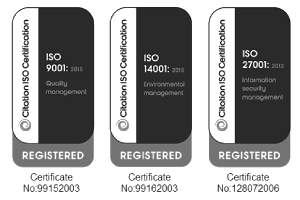Feel (and harness) the bern
Across the UK, the national grid has struggled to cope with the growth of domestic solar power generation. By successfully installing batteries alongside solar panels, Berneslai Homes - the arms-length management organisation that looks after the Council’s housing stock – has helped to ease the pressure on infrastructure as well as reduce their tenants’ energy bills. We take a look at their highly successful two-phased project.
Panel installation (Phase one)
Renewable electricity generation has increased massively over recent years and this is due in no small part to many small-scale installations found on individual homes.
Across Barnsley, 321 council owned homes have received free solar PV assets – more than 75% of these installations have been on bungalows with elderly tenants. The original solar panels were fitted in autumn 2016 with funding through Energise Barnsley. They are roof mounted on single storey properties with 10 panels on each property and have been operating effectively since they were installed.
All homes have benefited from a solar electricity monitor which helps residents maximise their savings by indicating when the solar panels are generating and when to use the free electricity. In the first year, the tenants saved over £115,000 in reduced electricity bills and over 1,859 tonnes of reduced carbon emissions.
The properties draw electricity directly from the panels when they are producing as the first source of energy used by the tenants. Any energy generated via the panels but not used spills over into the grid. This spill can cause problems for the grid as, at times, it is unable to cope with maximum generation on a sunny day when demand is low.
This has created constraints in some areas where homes with solar panels are clustered and existing infrastructure cannot cope during peak generation without costly upgrades. In many parts of the country – such as in Barnsley - social landlords wishing to install solar panels on their estates have had to wait to connect the final few properties on their projects until the local electricity network is reinforced to accommodate the full scheme output.
Faced with this problem, Berneslai Homes came together with others - battery manufacturers Moixa, the local DNO, Northern Powergrid and Energise Barnsley – to trial battery storage alongside solar panels.
Battery Storage (Phase two)
The project commenced in January 2017. Moixa’s Smart batteries were selected by distributor Northern Powergrid to be installed in 40 homes and linked in a virtual power plant. The trial used 30 of the homes fitted with solar with the intention of testing how the solution can reduce peak solar output onto the electricity networks when there is low local demand. The trial includes all 30 homes with solar PV panels plus 10 others without.
The intention is to manage clusters of home batteries in a virtual power plant and allow homeowners to use more of their solar energy, thereby exporting less which should significantly reduce peak solar generation output onto the network. This allowed more homes to have solar fitted without the need to invest in the network prior to fitting. The hope is that the insights which emerge from the project would enable panels to be installed on more homes using existing substations and cable networks.
An internet connection was installed into each home so that the performance of the batteries could be monitored from Moixa’s offices in London. The link means that the condition and charge level in each battery can be tracked. Problems with the internet link, the charging of the battery and the performance of the solar panels can all be tracked by Moixa. It also enables them to feed stored energy which is likely to be unused by the tenant into the grid when the battery is full. Energise Barnsley benefits from this process as it is paid for the energy generated by National Grid and so it provides a source of income.
Berneslai Homes’ own staff are responsible for fitting and maintaining the batteries as well as all of the electrical work that accompanies installing and maintaining them. The operatives, trained by Moixa, receive certificates with a unique operative number; providing them with authority to install, commission and undertake repairs to the units at their request. This has helped upskill the staff further and puts them in an ideal position to carry out future work for the ALMO.
Savings
The first batteries were installed at the end of January 2017 with no cost to the residents. Solar panels typically cut electricity bills by up to 30% and batteries can add further savings of up to 20% by allowing residents to use free energy generated during the day at night.
One tenant claimed that her bills had dropped from £28 a month to £3; just the kind of outcome that the partners were hoping for.
As with many projects of this type, behaviour change is an issue. The tenants have had to change tariff in order to make the most efficient use of the equipment. For tenants who have not previously done so, changing energy supplier may be something they are unwilling to do. Staff took time to provide information and explain the new equipment and the benefits of changing supplier to each tenant. Specific support has been provided where needed.
Tenants have been passed information about their options in terms of switching energy suppliers and Barnsley MBC’s white label supply option - Great North Energy - is promoted by the Council. All void properties are switched to Great North Energy.
Tenants have no interaction with the equipment. They have no buttons to press or dials to turn; there is no need for them to check the equipment; they do not have submit data over and above normal meter readings and they do not have to worry about the solar panels or battery not providing electricity as they have their original connection to the grid still in place. This ensures that they will still have an electricity supply if there is a problem with the panels or the battery and an interruption to that source. If this happens the supply automatically falls back to the original grid connection
Innovation
The first stage of installing roof mounted solar PV in 2016 provided a direct benefit to tenants and proved the concept that solar generation was viable in this geographical area.
Adding batteries to store the energy generated via the panels provided further benefits and a source of income. The fact that tenants were already used to the principle of renewable energy made the move to incorporating batteries that much easier.
This example also shows the benefit of engaging with partners in pilot projects where others can contribute funding. In this case Northern Powergrid provided £250,000 for the storage element of the project.
The national grid network is a fundamental element in the transition to a clean and green economy and it has long been recognised that significant investment is required. APSE Energy has come across a number of projects where grid capacity and access problems have led to the failure of a solar project business case. If battery storage can reduce the likelihood of this happening then it is to be welcomed and this project should provide evidence of such a scenario. This is a further reason why local authorities should re-visit any dormant plans they may have for solar farms.
• This article was taken from the APSE Energy briefing. For more information about how your council can get involved in renewable energy, please contact Phil Brennan, Head of APSE Energy on 0161 772 1810 or at [email protected]


.png)



.png)